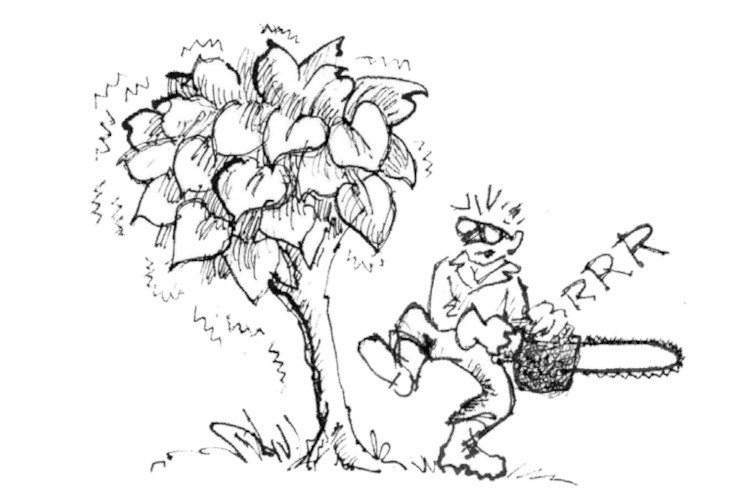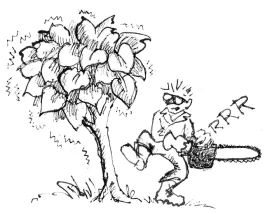
My name is Amanda, and I’m a tree hugger—in the literal sense! As a wildly energetic person, maybe I like how trees are always grounded, and maybe they help me be as well (maybe.) I’d never have imagined myself cutting down a tree unless I was on Survivor building a shelter.
So when we bought our house with its 100+ year old ash tree standing tall in the middle of our backyard, I was overjoyed. It was like having this majestic centerpiece at all times. To make it even better: no one could tell me not to give it hugs!
But as luck would have it, just after we got all the mortgage papers signed, our insurance company came by and made us cut down the beautiful Ash Tree. They said it posed too much of a risk for potential storm damage or fire hazards … which made sense but still felt wrong! We had no choice but to hire a team of lumberjacks and a crane to chop away at this monster until there was only a sad stump left behind.
Even worse, I’d realized that if we hadn’t chopped down most of the trunk already, we could’ve turned what remained into some sort of fun furniture piece—maybe even an outdoor bench! But since that wasn’t an option anymore, instead I decided to turn those stumps into planters; now they hold some of my favorite flowers each Summer—a reminder every time I look out onto my garden about how powerful nature can be if you let her do her thing.
That’s about all the experience I have with cutting down a tree, but when the author of today’s story, Hardy Mason, moved to West Virginia with his wife, they bought land with one acre of lawn and gardens and nine acres of woods. The woodlot was filled with various native species such as oak, walnut, ash, black cherry, and sassafras. It also had invasive species like multiflora rose vines, poison ivy vines, 20-foot-high greenbriers as well as ailanthus trees and princess trees, which needed management work done on them. Being diagnosed diabetic a decade earlier, combined with stress levels and an increase in blood sugar levels, caused the narrator to become befuddled when he went out one day intending to girdle a princess tree but instead girdled a catalpa tree by mistake. It didn’t end all that bad though, keep reading to find out what happened!
Enjoy More Gardening Mishaps
This story comes from our archive that spans over 30 years, and includes more than 130 magazine issues of GreenPrints. Pieces like these that turn stories of gardening mishaps into everyday life lessons always brighten up my day, and I hope this story does for you as well. Enjoy!

Every Stick Has Two Ends
By Hardy Mason

When my wife and I moved to West Virginia’s panhandle, we bought land with one acre for lawn and gardens and nine acres of woods. She was the family gardener and I the arborist.
The woodlot had oak, walnut, ash, black cherry, sassafras, and other native species, as well as shed-size thickets of multiflora rose, wrist-thick poison ivy vines, 20-foot-high greenbriars, and invasive ailanthus and princess trees. There was enough management work to last me a lifetime!
Here comes my big mistake. I had been diagnosed diabetic a decade earlier. Combine that with stress (which I had plenty of at the time), and my blood sugar goes up. When my blood sugar goes up, I get stupid.
One day, so befuddled I didn’t know I was befuddled, I went out with my chainsaw to girdle a princess tree. I checked the leaf shape, bark, and branching—yep, princess tree—then encircled its two main stems.
Arghh! When I got back under control, I realized the tree was a catalpa! Catalpas are valued for their spring flowers, early food for honeybees. They age beautifully. And I had girdled it.
I sadly decided to cut it down for firewood, but—you know how it is—didn’t get around to it … and noticed one day it was flowering! I had been so befuddled that day I hadn’t completely girdled it, and the wound had healed!
Every stick has two ends, the saying goes. So it was with my confusion that day. And thank goodness (certainly no thanks to me), the two ends of that tree had gotten back together just fine. ❖
By Hardy Mason, published originally in 2018, in GreenPrints Issue #112. Illustrated by Marilynne Roach

Does this remind you of your own story cutting down a tree? Leave a comment and share it with us!



